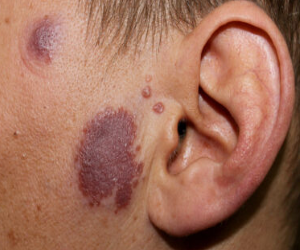Dr. Sotonye E. Imadojemu discusses her study, which sends a cautionary signal to dermatologists who may be the first physician to diagnose the multisystem disease occult systemic sarcoidosis.

Sotonye E. Imadojemu, MD, MBE
Assistant Professor of Dermatology, Harvard Medical School, and Director, Cutaneous Sarcoidosis and Granulomatous Diseases Clinic, Brigham and Women’s Hospital, Boston, Massachusetts
“In a study evaluating racial differences in systemic involvement among patients presenting to dermatologists for cutaneous sarcoidosis,1 we found that Black patients are significantly younger than non-Blacks at presentation and significantly more likely to have undiagnosed extracutaneous disease,” said study author Sotonye E. Imadojemu, MD, MBE.
“In particular, our results showed that Black patients were significantly more likely than non-Blacks to have cardiac involvement, and that is concerning considering that cardiac sarcoidosis is the deadliest form of this multisystem granulomatous disease.”
Dr. Imadojemu continued, “While we believe our study is the first to show the increased risk for systemic disease among Black patients initially presenting with cutaneous sarcoidosis, it also highlights that any patient diagnosed with cutaneous sarcoidosis may have subclinical systemic involvement. Therefore, all patients, irrespective of race, ethnicity, or other characteristics, should be evaluated for systemic involvement.”
The workup for systemic involvement should include, but is not limited to, an electrocardiogram, chest radiography, ophthalmologic examination, and baseline laboratory testing comprised of a complete blood count with differential and comprehensive metabolic panel.
“Additional evaluations should be dictated by the results of these initial investigations and a thorough review of systems that should be performed at each clinic visit. Any dermatologist who is not comfortable evaluating sarcoidosis patients for systemic disease should refer the individual to a pulmonologist or rheumatologist for assistance,” said Dr. Imadojemu.
Commenting on the findings of the study, Ted Rosen, MD, editor-in-chief, The Dermatology Digest said, “Considering that Black patients presenting with cutaneous sarcoid will generally be younger and may well have asymptomatic heart disease, there may be a low index of suspicion for cardiac involvement. Nonetheless, this study highlights the need to perform a comprehensive cardiac evaluation in order to detect unsuspected cardiac disease.”
He added, “Cardiac sarcoidosis often portends a bad outcome with the related fibrosis leading to congestive heart failure, arrythmias, and sudden cardiac death.2 It should also be noted that an electrocardiogram and echocardiogram may not be sufficient to detect sarcoidosis affecting the heart. Magnetic resonance imaging and positron-emission tomography scans may be required.”
Confirming a Clinical Observation
Dr. Imadojemu and colleagues were motivated to undertake the study based on an anecdotal observation that among patients with sarcoidosis, Black patients seemed to have more severe cutaneous disease and more extensive extracutaneous involvement than non-Blacks.
“Our group sought to explore the accuracy and validity of this impression by conducting a study. Our hope is that once we identified and quantified the problem, we would be better able to not only devise ways to create structures that lend the necessary support to Black patients with sarcoidosis and the physicians who care for them, but also to address and correct the roots of these health disparities,” said Dr. Imadojemu.
To investigate potential racial differences in systemic involvement among patients first diagnosed with sarcoidosis by a dermatologist, Dr. Imadojemu and colleagues conducted a search of the Research Patient Data Registry of the Mass General Brigham Hospital for the years 2000 to 2019. They identified 50 patients with biopsy-proven cutaneous sarcoidosis who presented to a dermatologist without having been diagnosed with systemic disease. The largest proportion of the study population (48%) was white. Black patients and Latinx patients each accounted for 18% of the group, 4% self-identified as Asian Pacific Islander, 2% were Native American, and 10% self-identified as other.
Mean age at the time of presentation to the dermatologist was 36.9 years for Black patients and 48.4 years for non-Blacks (P =.014). A diagnostic workup identified extracutaneous involvement in 79% of Black patients versus 46% of non-Black patients (P =.044). Among patients who had a work-up for cardiac involvement, the finding was positive in 33% of Black patients versus in none of the non-Black patients (P =.032).
There was a trend for Black patients to have a higher number of extracutaneous organ systems involved (P=.049). Rates of lymph node, pulmonary, and ocular involvement were also higher among Blacks, although the differences compared to non-Black patients were not statistically significant.
Practice Performance Gap
A need to remind dermatologists that they should initiate an evaluation for systemic sarcoidosis if they are the first physician to diagnose the disorder is highlighted by another analysis in which Dr. Imadojemu and colleagues identified a significant practice gap in this area.3 Reviewing data from the same patient cohort, the researchers found that recommendations for chest imaging and ophthalmologic examination were given to nearly all patients (97.9% and 91.7%, respectively). However, assessment for cardiac involvement was recommended to only 28 (58.3%) patients.
Future Research
Dr. Imadojemu noted that the study investigating racial differences has limitations that include its small sample size, retrospective design, and the fact that an electrocardiogram or echocardiogram may not be sufficient to identify cardiac sarcoidosis when it exists.
“Because of its limited size, our study may have lacked power to identify other potential ethno-racial differences in systemic involvement among patients with sarcoidosis initially diagnosed because of cutaneous disease. It is noteworthy that Japanese patients have been reported to have a much higher likelihood of ocular and cardiac disease than patients in the rest of the world, for reasons that remain obscure,” said Dr. Imadojemu.
“Therefore, larger studies are absolutely warranted to identify broader racial/ethnic variation among patients with sarcoidosis.”
Dr. Imadojemu also noted the importance of recognizing that structural racism likely plays a role in the health disparities documented in the study.
“We know that race is a social not biological category. My research explores the role that environmental exposures that vary by race due to structural racism, such as exposure to environmental toxins, housing discrimination, and racial stress, play in the pathogenesis and severity of this beguiling disease,” she said.
By Cheryl Guttman Krader
References
1. Kassamali B, Villa-Ruiz C, Kus KJB, et al. Increased risk of systemic and cardiac sarcoidosis in Black patients with cutaneous sarcoidosis. J Am Acad Dermatol. 2022;86(5):1178-1180. doi:10.1016/j.jaad.2021.04.079.
2. Markatis E, Afthinos A, Antonakis E, et al. Cardiac sarcoidosis: diagnosis and management. Rev Cardiovasc Med. 2020;21(3):321-338. doi:10.31083/j.rcm.2020.03.102.
3. Villa-Ruiz C, Lo K, Desai S, et al. Practice gaps in the evaluation of systemic involvement in patients with cutaneous sarcoidosis presenting to a dermatologist: A retrospective review of 48 patients. J Am Acad Dermatol. 2021;85(3):794-796. doi:10.1016/j.jaad.2020.10.021.

